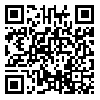Tue, Feb 18, 2025
[Archive]
Volume 31, Issue 3 (2021)
IJAUP 2021, 31(3) |
Back to browse issues page
Download citation:
BibTeX | RIS | EndNote | Medlars | ProCite | Reference Manager | RefWorks
Send citation to:



BibTeX | RIS | EndNote | Medlars | ProCite | Reference Manager | RefWorks
Send citation to:
Hashemi A, Ekhlassi A, Dolati M. Interpreting Iranian Architecture in The Post-Revolutionary Period with Interaction Model of Tectonic and Stereotomic Theory Approaches. IJAUP 2021; 31 (3)
URL: http://ijaup.iust.ac.ir/article-1-588-en.html
URL: http://ijaup.iust.ac.ir/article-1-588-en.html
1- Ph.D. Candidate of Architecture, Karaj Branch, Islamic Azad University, Karaj, Iran
2- Associate Professor, School of Architecture, Iran University of Science and Technology, Tehran, Iran ,ekhlassi@iust.ac.ir
3- Assistant Professor, School of Architecture, Karaj Branch, Islamic Azad University, Karaj, Iran
2- Associate Professor, School of Architecture, Iran University of Science and Technology, Tehran, Iran ,
3- Assistant Professor, School of Architecture, Karaj Branch, Islamic Azad University, Karaj, Iran
Abstract:
Since tectonic and stereotomic theories have neither been used systematically nor dealt with simultaneously for the interpretation of architecture, by explaining the theoretical position of critics and their thoughts, the process of their interaction will be more effective. The main questions asked is it possible to interpret architecture through the interaction of tectonic and stereotomical theories precisely? In this regard, research aimed to read and process the physical dimensions and spatial structure of Iranian architectural works in the post-revolutionary period based on the interaction of approaches of tectonic and stereotomical theories. The approach of the present research in terms of epistemology is interpretive with deductive reasoning strategy. Qualitative research was carried out with the help of library documentation and field studies in this paper. The findings of this study indicate that the approaches of tectonic and stereotomical theories, regardless of the architectural style, have affected the materials, elements, structure, and construction of the body and spatial configuration. Furthermore, the interaction of the approaches of these two theories and, in other words, the non-algebraic sum of the approaches affected by the two theories on these components in both integrated and non-integrative forms can be perceived and received. Also, the maximum interaction in the selected architectural works was on the construction component, including a combination of symbolic body configuration of tectonic theory along with the symbolic configuration of stereotomical theory.
Type of Study: Research Paper |
Subject:
Architecture
| Rights and permissions | |
 | This work is licensed under a Creative Commons Attribution-NonCommercial 4.0 International License. |





